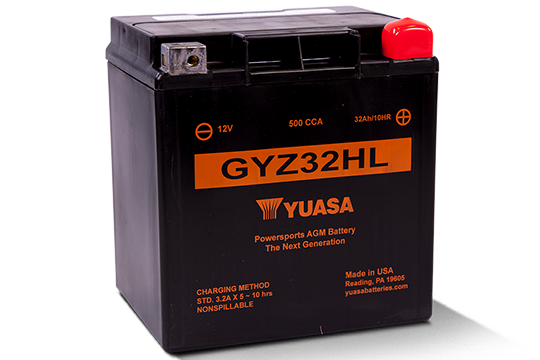SPONSORED CONTENT
Days are getting shorter, and that means that cold weather will follow soon. Does thinking about the end of riding weather make your heart sink a little? You don’t have to put your bike in storage just because it’s winter.
If you make sure that both you and your bike are ready for the cold, you can find just as much excitement riding in the snow as you did on those long summer days. Winter doesn’t have to tie you down or lock you in.
Prep Yourself for Winter

The most important thing to remember about winter is the effect it has on your attention. Riding in the cold can affect your ability to make decisions and react to unexpected events. Don’t let yourself be caught with your guard down.
Shorter days:
That early sunset is nature’s way of reminding you that you have limits. Along with limiting the line of sight, short days also send signals to your brain that it’s time to sleep, making you groggy a lot earlier than you would typically be.
Colder temperatures:
The deep cold also affects your sense of diligence. According to the CDC, the symptoms of frostbite and hypothermia include exhaustion, confusion, memory loss, and fumbling hands. Not a good state of mind for riding in winter conditions!
Did you know that road speed creates its own wind chill factor? Exposed skin can get frostbite.
Layer up to stay warm and listen to your body’s signals. If you start to nod off, pull over immediately and find shelter.
Safety diligence:
We ride to put the worries and cares of the world behind us. We ride to live in the moment, experiencing every second of the rush. The best way to be completely alive and present in those moments is to ensure all safety measures are in place before getting on your bike.
Prep Your Driving Skills for Winter

Riding in the winter is fun, but that comes with a few caveats – it’s fun if you can quickly adapt to the changing environment. You’ll need to be more aware of the road since visibility will be hampered and obstacles more common.
Slow down to compensate for slippery roads. Ice and snow can present hazards, but so can the salt and cinders used to melt them.
Increase your following distance from other vehicles.
If you’re riding for recreation rather than commuting, consider group outings instead of solo rides.
Baby Your Bike for Winter Riding

If you want to ride your bike this winter, you’ll need to treat it right.
Park it in a garage or shed if possible. Consider whether or not you want a cover. Waterproof bike covers can trap moisture and cause rust and corrosion.
Make sure you’ve got the right tires for winter riding and that the tread is sufficient. Remember to check your tire pressure frequently during winter, before every ride if possible.
Hose down your bike after riding if snowy conditions mean it may be covered in salt from the road. Road salt can linger for weeks, so continue to keep your motorcycle clean even after the ice has melted.
If your bike is liquid-cooled, check your antifreeze. Consider flushing the cooling system, and don’t forget to check all the radiator hoses too.
Cold decreases tire traction because tires shrink in the cold. Before hitting the highway or the busy city streets, warm up your tires with a slow lap around the neighborhood. This will improve your traction on the road.
Cold-temperature starts are hard on your bike, so don’t start your bike just because you think it will keep the battery charged. Before winter sets, it’s time for an oil change to a cold temperature oil. These are less dense than summer-weight oils, ensuring that critical engine parts stay lubricated.
The Heart of Your Beast

More importantly, it may be time for a new battery with higher cold cranking amps (CCA).
CCA is used to rate a battery’s performance in cold conditions. The CCA rating is the amps a 12-volt battery can discharge for 30 seconds at 0 degrees Fahrenheit while maintaining a minimum voltage of 7.2 volts (or 1.2 volts per cell).
If you’re planning to do any riding this winter, you want a motorcycle battery with a high CCA.
Extreme temperatures, both heat and cold, can be hard on your bike battery. The transition to winter driving is the best time to consider an upgrade. If you’ve got an old lead-acid conventional battery, it’s time to treat your baby to an AGM battery instead.

Yuasa’s YTZ line of lightweight, high-performance AGM batteries are ideal for sportbikes, meeting or exceeding Powersports OEM specifications. The enhanced polypropylene case offers excellent resistance to extreme temperatures. And that means you won’t be surprised to find a cracked battery case when temperatures plummet.
Check out the H Series for superior performance in cold-weather climates. They offer up to 20% more cold cranking amps than other AGM batteries.
Yuasa’s GYZ high-performance AGM battery offers its best cold performance rating up to 500 CCA. Its solid, sealed construction provides protection for vibration, which means reliability and confidence that you can get where you’re going, regardless of the weather.
The Chicago Tribune rated the Yuasa AGM battery the “best of the best” motorcycle battery based on its reliability and stellar CCA rating. Considering that Chicago is the second coldest city in the United States, that’s quite the endorsement. With an average winter low of 22 degrees F and 122 days of freezing temperatures per year, the right motorcycle battery is critical for winter riding in the Windy City.
Test Boundaries, Not Limits
Mechanical breakdowns are a pain but breaking down in winter can be life-threatening. Make sure both you and your bike are prepared for whatever the weather offers by upgrading your bike with a high-performance Yuasa battery.













